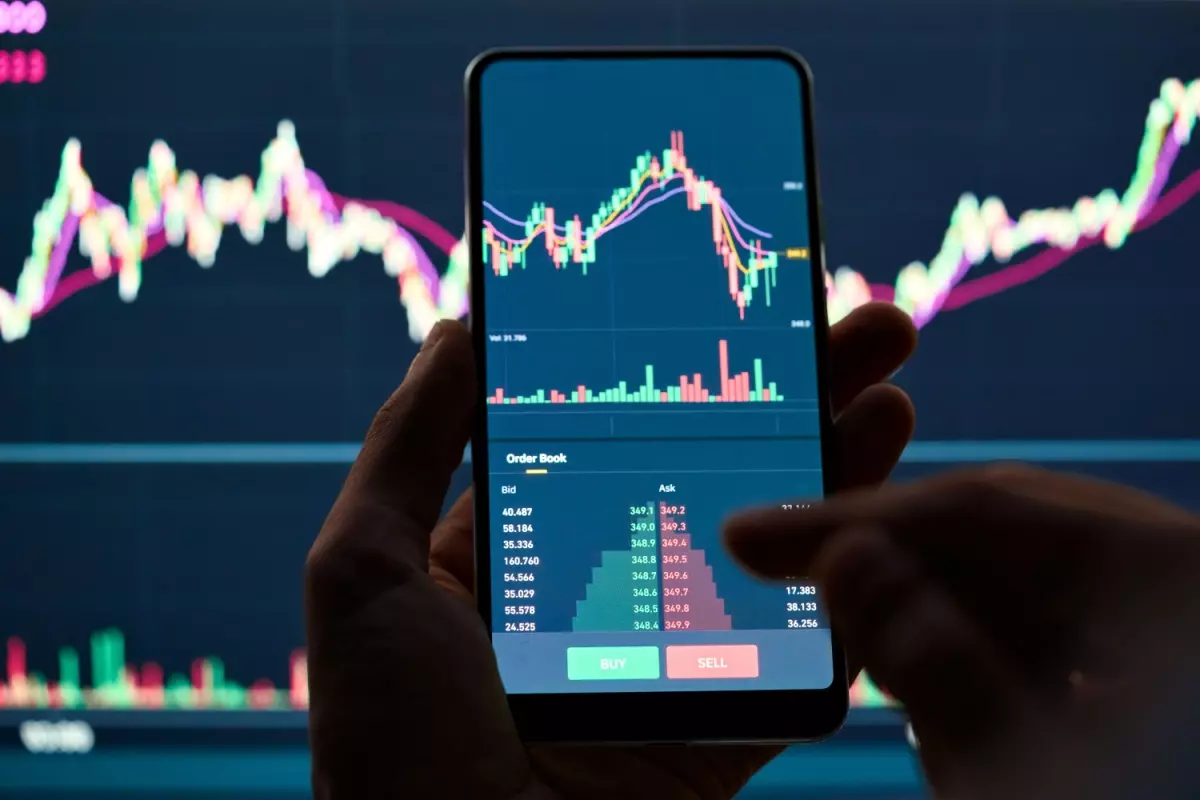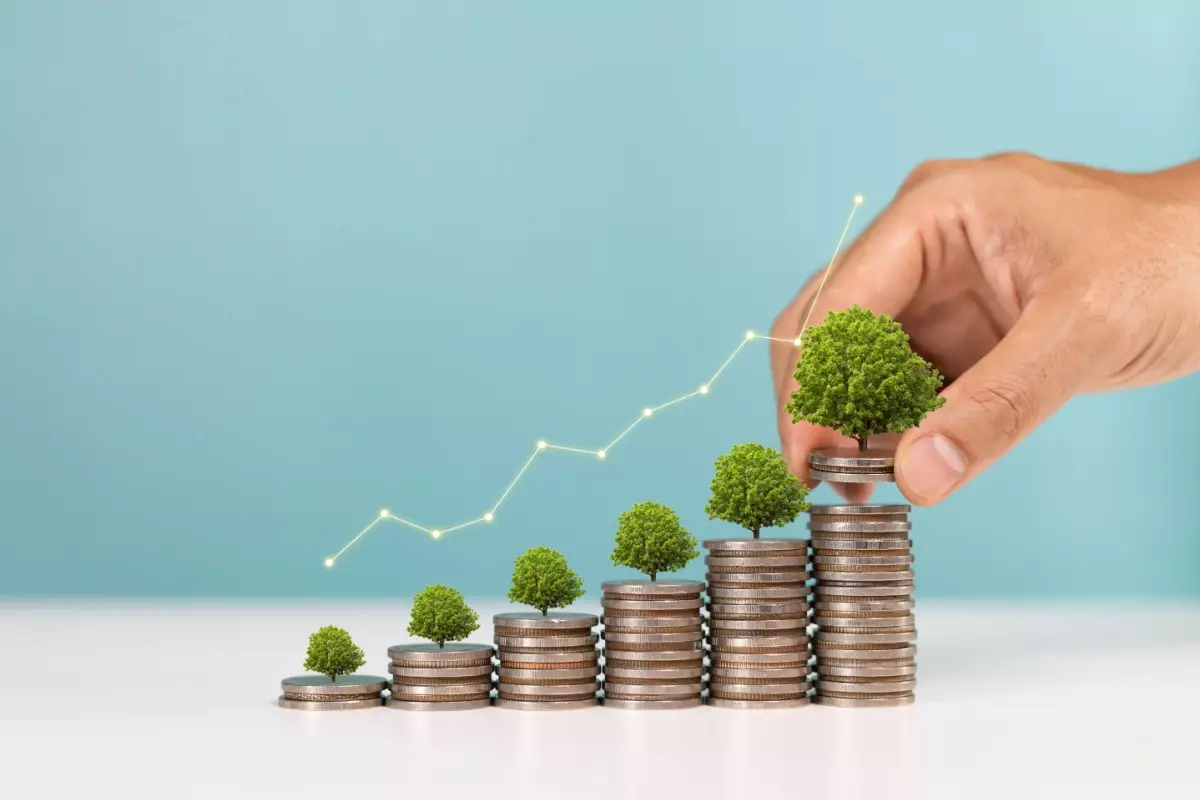If you’ve got $200,000 ready to invest, congratulations – you’re already one step ahead of most investors. With this solid foundation, you are well on your way to building long-term wealth, but if you want to maximize the potential of that investment, you’ll need a strategy.
In this guide, we’ll explore some of the best ways to invest $200k and turn it into a source of passive income.
Understanding Passive Income
Simply put, passive income refers to a way of earning money without working a traditional job. By traditional, I mean a job that requires one to exchange hours for a predetermined rate of pay.
Passive income typically involves an initial stage of research and financial investment in assets like stocks, bonds, or real estate. This approach is often used to boost retirement savings and create a more secure financial future. Once the initial investment is made, minimal ongoing effort is required, meaning you don’t have to regularly manage or work on these investments.
The invested money generates revenue over time through dividends or interest payments, which makes passive income less labor-intensive than active income.
How to Invest $200K for Monthly Income
You have the money to invest, but you may be wondering where to invest $200k to start generating passive income. There are many investment opportunities you can take advantage of, including options that offer varying levels of liquidity. Here are just a few to explore:
Stocks
Arguably, the most common strategy of investing for income is stocks, which represent a percentage of ownership in a business. When you buy a stock, you become a shareholder with a claim on the company’s assets and earnings.

You earn passive income if the company pays out dividends. You can also sell the stock at a higher price if it increases.
Dividends are payments the company makes to shareholders in additional shares or cash. While the amount can vary, it is usually a set dollar amount or a percentage of the stock’s market value.
There are many types of stocks, each with their own unique qualities and advantages. Some popular types of stocks are:
- Blue-Chip Stocks: These are shares of well-known, high-value companies, usually traded on major exchanges like the S&P 500, Dow Jones, and Nasdaq. These companies have a history of stable earnings and dividends. Although these stocks cost a premium, they offer more stability.
- Growth Stocks: These stocks represent companies expected to grow at a higher rate than other companies in the same industry. They may not pay dividends, but they offer a high potential for the stock price to increase, offering significant yields when you decide to sell. However, the potential for high yields also comes with some added volatility and risk if the company does not perform as expected.
- Dividend Stocks: These are any stocks in which the company pays out a portion of its profits to shareholders. Dividend rates have historically fluctuated between 2% and 5% of the stock’s current price, making them particularly attractive for people looking for passive revenue streams since they offer regular payouts.
To begin investing in stocks, consult a reputable broker that offers a user-friendly platform, educational resources, and reasonable fees. Some well-known brokers include:
- Fidelity: known for its comprehensive research tools and customer service
- Charles Schwab: offers a wide range of investment options and educational resources
- Robinhood: popular for its easy-to-use mobile app and commission-free trades
- E*TRADE: provides a robust trading platform and extensive research tools
- TD Ameritrade: known for excellent educational resources and a user-friendly interface
After you have opened an account, added funds, and done the research on which stocks have the most growth potential, you’re pretty much ready to begin trading on major stock exchanges. Keeping in mind that the average dividend yield of an S&P 500 stock is 2% to 3%, your $200,000 would then get you somewhere between $4000 to $6000 in dividends yearly. Additionally, the investment being of a larger amount makes it more resistant to market fluctuations
Let’s suppose that you decide to reinvest those dividends into the index. In that case, over the last decade, you would see an average yearly return of about 10% total. Thus, if 10 years ago you’d invested $200,000 into the S&P 500 index and then reinvested all the dividends back, you would have approximately $540,000 today.
Bonds
If you prefer less volatility and a more stable investment option, you can invest in government or municipal bonds. When you buy a bond, you are agreeing to loan the issuing organization money. In return, you’ll receive interest and the original principal amount once the bond matures.
A bond’s maturity date is the point at which the principal amount of the bond is paid back to the investor. Unlike stocks, you cannot liquidate your bonds at any time. You typically have to wait until the maturity date to collect your principal and interest. A bond’s maturity date varies, with the shortest maturity being a few months, while the longest extends up to 30 years or more.
Bonds are often preferred by risk-averse investors because you are guaranteed to receive your principal back. Additionally, most bonds offer steady interest rates, allowing your money to grow passively over an extended period.
The most common types of bonds are:
- Treasury Bonds (T-Bonds): T-Bonds have maturities of 20 to 30 years and pay interest every six months. Due to their long-term nature, they offer a reliable stream of passive income for decades, making them suitable for investors looking for long-term stability.
- Treasury Inflation-Protected Securities (TIPS): TIPS are designed to protect your investment from different types of inflation. The principal amount adjusts based on inflation rates. If inflation increases, so does your principal, ensuring that your purchasing power is maintained. At maturity, you receive the adjusted principal or the original principal, whichever is greater. TIPS also pay interest twice a year, with the interest amount adjusting according to the inflation-adjusted principal. These bonds mature in five, 10, or 30 years, and recent rates are around 2%.
- Municipal Bonds: Issued by cities, states, or other local government entities, municipal bonds function much the same way as T-Bonds. With maturities ranging from 10 to 30 years, municipal bonds provide a steady income stream while also offering the potential for tax-free returns on the interest earned. The current average rate for municipal bonds is about 3.6%, which is relatively high compared to recent years, providing a favorable return on investment.
Government bonds can be purchased directly through treasurydirect.gov, which is often the most common and secure method for buying U.S. Treasury bonds. Alternatively, you could go through a broker like Fidelity, Charles Schwab, or Vanguard.
Once you’ve opened an account, you can diversify your $200,000 investment by buying multiple bonds with different maturity dates and interest rates. Government bonds such as U.S. Treasury bonds currently offer an average annual yield between 3% and 4%, depending on the economic climate and the bond’s maturity terms. For the sake of this example, we’ll use a rate of 3.5%.
Let’s say that you invested $200,000 in a diversified bond portfolio that has an average yield of 3.5%. Annually, that would come down to approximately $7000 in interest payments (and $70,000 over 10 years). Once you’ve reached the maturity rate, you’ll get the principal back, which will result in a total value of $270,000.
There are some investors who use bond laddering, which is a strategy focused on reinvesting the interest into new bonds. The idea is that if you reinvest the interest into more bonds, your overall returns will increase through compounding. In the case of a $200,000 investment, that would potentially amount to $282,000 over 10 years.
Certificates of Deposit (CDs)
CDs are savings accounts that have set maturity dates, at which time you receive your principal plus interest. Maturity dates for CDs range from a few months to several years. Typically, longer maturity dates offer better interest rates, but you won’t be able to access your money for a longer period of time.
CDs offer a fixed interest rate or annual percentage yield (APY), which means you know exactly how much you will earn by the end of the term. Most reputable institutions, like Chase or Charles Schwab, offer rates around 5%.
Investing in a CD with a substantial amount, like $200,000, offers the advantage of predictable income. From the outset, you know the exact return you will receive, which makes CDs a reliable source of passive income. Additionally, your investment is safe because CDs are insured by the Federal Deposit Insurance Corporation (FDIC), meaning your money is protected.
The only major downside to opening a CD is that you won’t be able to withdraw your funds or deposit more in the same account. You will have to wait until the maturity date. If you withdraw your money early, you will face a penalty.
Though these penalties vary by institution, you can generally expect to forfeit a certain amount of your interest. In some cases, you might even lose a portion of the principal amount.
In 2023, the APY average for CDs was around 1.76%, but it is worth noting that higher rates were being offered in 2024. Suppose you invested $200,000 in a 5 year CD (with yearly interest being 2%), then by the end of that period you will have earned $20,000. This will bring your total up to $220,000.
Continuing on the same example, if you were to regularly reinvest in new CDs over 10 years, your interest could reach $40,000. Notably, these numbers fluctuate as the years go by. However, reinvesting CDs over 10 years could turn your $200,000 into $240,000.
High-Yield Savings Accounts (HYSAs)
Similar to CDs, HYSAs offer higher interest rates than traditional savings accounts. However, unlike CDs, HYSAs do not have fixed terms. Since there is no maturity date, you can withdraw and deposit funds at any time.
HYSAs provide stable passive income by regularly generating interest payments, usually on a monthly basis. On average, most banks offer rates between 3% and 5%, which is significantly higher than a traditional savings account.

This makes HYSAs an excellent option for investors seeking steady returns while maintaining stability and easy access to their money. With $200K invested in an HYSA, you will benefit from compounded interest. You will receive monthly interest payments, which will generate future returns. This basically doubles your money over time, helping to generate more and more passive income.
To open an HYSA, choose a bank with competitive APYs. Once you deposit your funds, it will start earning interest. Typically, interest is credited to your account monthly. As mentioned, many banks offer HYSAs with rates between 3% and 5%.
For instance, your $200,000 investment into your HYSA with 4% yearly earnings would result in $8000. If you keep compounding interest over 10 years and never withdraw, your interest alone would amount to $96,568. This means, in 10 years, your HYSA investment will amount to about $296,568.
We shouldn’t forget, however, that HYSAs do not offer fixed interest rates, so your total investment value is subject to those fluctuations.
Real Estate
Investing in real estate is yet another way to diversify your portfolio and generate passive income. Here are a few strategic options to keep in mind when investing $200K:
Rental Properties
With $200K, you can purchase a rental property outright in lower-cost areas or use it as a substantial down payment in higher-cost markets. For example, in cities where properties are valued at around $500K, your $200K could cover a 40% down payment, significantly reducing mortgage costs. This investment can yield monthly rental income, often ranging from $1,500 to $3,000, depending on location and property type.
The rental income can cover ongoing expenses such as mortgage payments, property taxes, insurance, and maintenance costs, with potential for additional profit.
Real Estate Investment Trusts (REITs)
Investing $200K in REITs allows you to gain exposure to the real estate market without directly managing properties. With an average annual dividend yield of 3% to 6%, you could expect to earn between $6,000 and $12,000 per year in passive income.

REITs are traded on major stock exchanges, and your $200K investment can be diversified across multiple REITs focusing on various property sectors such as residential, commercial, and industrial.
Real Estate Crowdfunding
Real estate crowdfunding platforms provide access to diverse real estate projects with a smaller investment threshold. With $200K, you can spread your investment across several projects, minimizing risk and gaining exposure to different markets and property types.
For instance, you might invest $20K each in ten different projects, targeting returns of 8% to 12% annually. This approach could generate an income of $16,000 to $24,000 per year while building a diversified real estate portfolio.
House Flipping
House flipping can be a profitable venture with $200K, especially in markets where properties are undervalued or in need of renovation. You might purchase a property for $150K and allocate $50K for renovations, enhancing its market value significantly.
Upon selling the improved property, typical profit margins can range from 10% to 20% of the total investment, potentially netting you $20,000 to $40,000 in profit per flip.
Investing Tips
Now that you know what to do with $200k, here are some general investing tips that can help you make the most of your investment:
Risk Tolerance
Risk tolerance refers to how much potential loss you can handle, given how the markets can change. Each of the options mentioned above is a great way to invest your money, but they all come with varying levels of risk and volatility.
Before you choose how to invest your money, determine how much risk you’re willing to take on. Then, determine how risky your choice of investment is and whether it aligns with your preferences.
- Stocks are high risk because they are subject to market fluctuations and can lose value quickly due to economic downturns, company performance, or investor sentiment.
- Government bonds are low risk because they are backed by the government, making them less susceptible to default compared to corporate bonds. You are also guaranteed to receive at least your principal amount.
- CDs are very low risk because they offer fixed interest rates and are typically insured by the FDIC, ensuring the return of your principal.
- HYSAs are also very low risk because they are insured by the FDIC and provide a fixed interest rate.
Investment Horizon
Your investment horizon refers to how long you need to hold onto an investment to see meaningful gains and generate passive income. Different investment options require varying time commitments to maximize returns.
Keep in mind that any investment option you choose will require at least a few years to generate significant passive income.
Here’s a breakdown of suitable investment horizons for different assets:
- Stocks usually need to be held for longer terms, like five to ten years. This investment is the most susceptible to market volatility, economic changes, and business performance. Holding for a longer period allows investors to generate more dividends that can be reinvested. Also, it gives the company enough time to grow its earnings, which can translate into increased stock value.
- Bonds offer more flexibility, but it is recommended to opt for longer maturity dates to see larger gains. With a longer maturity date, your investment has more time to generate interest and potentially benefit from adjusted inflation rates.
- CDs that have longer maturity dates typically come with higher interest rates, requiring more commitment. While it is possible to generate some returns with a shorter maturity date, you’ll see the most significant gains if you leave your money in a CD for several months to a few years.
- HYSAs will also generate the most returns if they are left in the account for a longer period of time. Since HYSAs generate interest monthly, the more money you have in the account, the more interest you’ll get. Similarly, the longer you leave it in the account, the more interest you will make on it.
Fees
The fees and tax implications of your investments are also noteworthy. Higher taxes and fees mean lower returns, so finding investments with advantageous tax conditions and low fees can optimize your portfolio and spread that $200,000 a little farther.
Here’s a breakdown of the fees associated with each type of investment:
- Stocks: Many online brokers offer commission-free trading for stocks, so you can buy and sell without fees. When working with a traditional broker, you may pay fees around 1% to 2% or a flat rate depending on the trade and the broker’s terms. If you sell your stocks for a profit, you will be required to pay capital gains tax on the amount. The amount will depend on your income bracket and how long you held the stock – usually, it is 10% to 37%.
- Government Bonds: There are usually no fees when you purchase U.S. Treasury bonds through TreasuryDirect. However, when buying bonds through a broker, you may see fees of 1% to 5%.
- CDs: CDs don’t usually have fees, but if you want to withdraw your money before the maturity date, you will need to pay penalty fees. These penalties can be equivalent to several months of interest, a percentage of the principal, or a flat fee.
- HYSAs: These accounts generally do not have fees since they function as ordinary savings accounts. However, some banks may charge you if the balance drops below the minimal required amount.
Level of Involvement
Finally, different investments require varying levels of attention on the investor’s part. We’ve highlighted the level of involvement needed for each type of investment, specifically focusing on their passive income potential:
- Stocks require a high level of involvement because trading in stocks often requires regular monitoring of the major stock exchanges, staying updated on market trends, and company performance.
- Bonds require a low level of involvement because they are a buy-and-hold strategy. After purchasing, you generally wait until the bond matures to cash out. This approach requires little oversight, making bonds a relatively low-maintenance investment for passive income.
- CDs require a very low level of involvement because you have a fixed interest rate. Once you deposit your money, there’s no need for management until the CD matures.
- HYSAs require a low level of involvement because you only need to maintain the minimum balance to avoid fees.
How Much Monthly Income Will $200K Generate?
If you were wondering how much your monthly income you’ll receive depending on your investment vehicle, take a look at our rough estimations:
| Investment Type | Expected Annual Return | Monthly Income Potential |
| Blue-Chip Stocks | 3% dividend yield | $500 |
| Growth Stocks | No dividends, potential capital gains | N/A (focus on long-term growth) |
| Dividend Stocks | 4% dividend yield | $667 |
| Treasury Bonds (T-Bonds) | 3.5% yield | $583 |
| Treasury Inflation-Protected Securities (TIPS) | 2% yield | $333 |
| Municipal Bonds | 3.6% yield (tax-free) | $600 |
| Certificates of Deposit (CDs) | 5% APY | $833 |
| High-Yield Savings Accounts (HYSAs) | 4% APY | $667 |
| Rental Properties | 6% net rental yield | $1,000 |
| Real Estate Investment Trusts (REITs) | 5% dividend yield | $833 |
| Real Estate Crowdfunding | 8% return | $1,333 |
| House Flipping | 10% profit per flip | N/A (depends on timing and market conditions) |
How to Become a Millionaire With $200K
Becoming a millionaire with $200,000 is realistic if you use strategic financial planning and smart investing. Diversifying a portfolio with stocks, bonds, and index funds can leverage compound interest for growth. Meanwhile, real estate investments, such as rental properties, can generate consistent cash flow and appreciation.

While the timeline varies, a diversified portfolio might achieve a 7% to 10% annual return, potentially doubling the investment every seven to 10 years through compounding. Patience and adaptability will help you on your road to becoming a millionaire.
Final Thoughts: Achieving Success With Your $200K Investment
With $200,000, you have the flexibility to invest a significant chunk of cash in multiple sectors. Making informed decisions about where you want to put those pieces of your investment will maximize the potential for that money to grow.
James Miller is a Senior Content Writer at McGruff.com. He has a background in investing and has spent most of his career in the financial industry. He can trace his family tree back to the California Gold Rush when his ancestors risked it all to make it big in the west. He feels like he's following in their footsteps as he strives to make sense of today's gold market.
